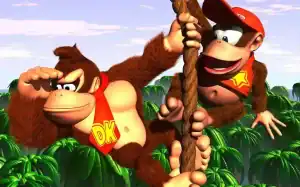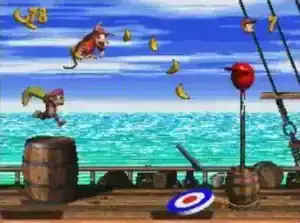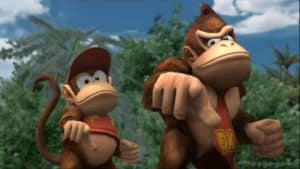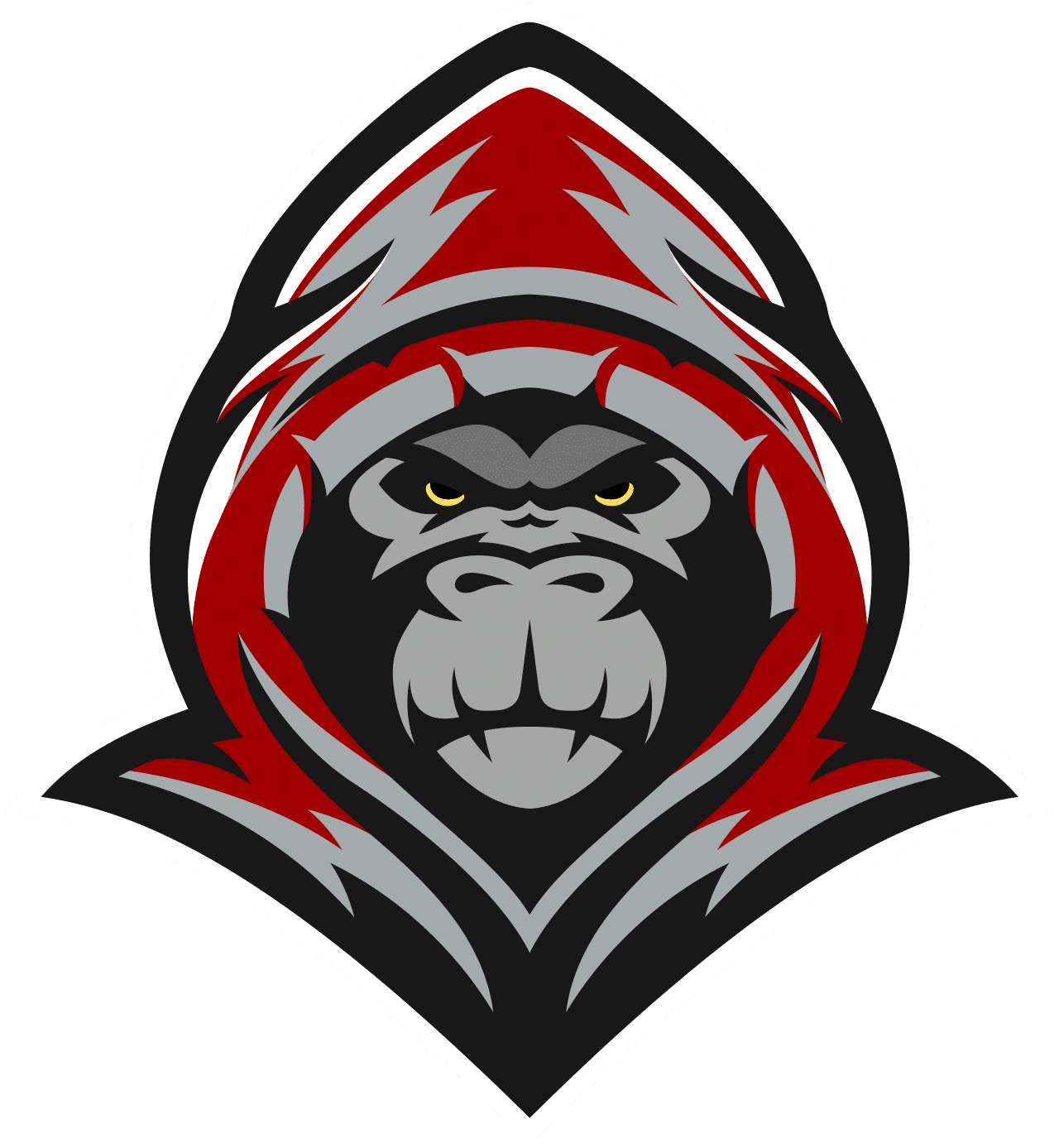If you were raised with a controller in your hand during the 1990s to early 2000s, chances are you know Diddy Kong — the little monkey with the red hat, rocket barrel, and more attitude than you can shake a stick at. But where did this banana-wielding icon come from, exactly? How did he go from sidekick to star of the show? Let’s explore the more complicated than you’d expect history of Diddy Kong.
The Beginning: Rare’s Ambitious Sidekick

Diddy Kong made his debut in 1994’s Donkey Kong Country for the Super Nintendo Entertainment System (SNES), developed by Rare. This was no ordinary sidekick introduction. Rare, the British game developer, had been commissioned by Nintendo to restart the Donkey Kong franchise. Instead of merely developing another barrel-throwing title, Rare created an entirely new world. One filled with lush jungles, snowy caves, and iconic characters.
And among those characters? A spunky little monkey named Diddy Kong.
Originally, Rare had envisioned Diddy as a redesigned Donkey Kong Jr. (remember him from the arcade days?). But Nintendo felt the changes were too drastic, so Rare gave him a new identity. Thus, Diddy Kong was born. With his signature red cap and shirt emblazoned with stars), Diddy brought a youthful energy to the series that perfectly complemented the more lumbering Donkey Kong.
Sidekick No More

Although he started out as DK’s trusted sidekick, it didn’t take long for Diddy to get his own moment in the spotlight. In Donkey Kong Country 2: Diddy’s Kong Quest (1995), Diddy took top billing in an adventure to rescue Donkey Kong from the evil clutches of Kaptain K. Rool. This game was a hit — it’s even a few fans’ favorite of the trilogy — and it proved that Diddy was more than capable of headlining a game without his banana buddy.
Diddy wasn’t there for moral support; he had his own style of play. He was faster, more nimble, and could do tough jumps that DK couldn’t. Where Donkey Kong was the brute strength, Diddy was the finesse.
Going Bananas with the Spin-Offs
As the 90s continued, Diddy became more than just a platforming star. He got behind the wheel in Diddy Kong Racing (1997), Rare’s answer to Mario Kart. With a twist, though — Diddy Kong Racing had a whole adventure mode with a storyline, boss battles, and multiple vehicles (hovercrafts, anyone?).
It was a massive success and brought the world a host of future stars, including Banjo and Conker. Diddy proved once again that he wasn’t just along for the ride — he was leading the way.
Post-Rare Era: Clinging to Legacy

When Microsoft bought Rare in 2002, the future of Rare’s Nintendo-born characters was uncertain. Yet Diddy Kong continued to be a Nintendo loyalist, appearing in games like Donkey Kong Country Returns, Mario Kart, and Super Smash Bros. His mug was a constant reminder of the platformer’s heyday — and his popularity never dipped. Fans speculate if he’ll make an appearance in the soon-to-be release of Donkey Kong Bananza, though nothing is confirmed as of yet.
He’s also spawned his own spin-offs (like Diddy Kong Pilot, which unfortunately never saw the light of day), and is still a fan-favorite in multiplayer games thanks to his nimble moves and sassy attitude.
Why We Still Love Diddy Kong
Diddy Kong is not just a second banana. He’s smart, spirited, and always up for an adventure. Donkey Kong might be the franchise’s face, but Diddy is its heart. The little energy ball who’ll jump before he thinks and then ask questions later. Alongside, he’s evolved beyond sidekick status to a symbol of fun, imagination, and that sense of wonder we had when we first picked up a controller.
So here’s to Diddy: the cap-wearing, cart-racing, peanut-popping monkey who’s still going strong after all these years.


